Tree saplings are lined out in rows in April and then lifted out of the ground approximately 18-24 months later. We have to work hard to prepare and maintain the soil for this ‘lining in’ process.
Fertilisation
Soil is tested annually and a plan of action is formulated depending on the results of the soil test. In recent years, we have tried to reduce and eliminate chemical fertiliser, mostly due to environmental factors, but also as a direct result of spiralling fertiliser costs.
We are focusing on manure from cattle shed to meet the needs of the land where possible. Combining this with land management, we have been achieving good results. We have reverted to composting down the manure over an 18 month period, turning it periodically to break it down to a finer consistency.
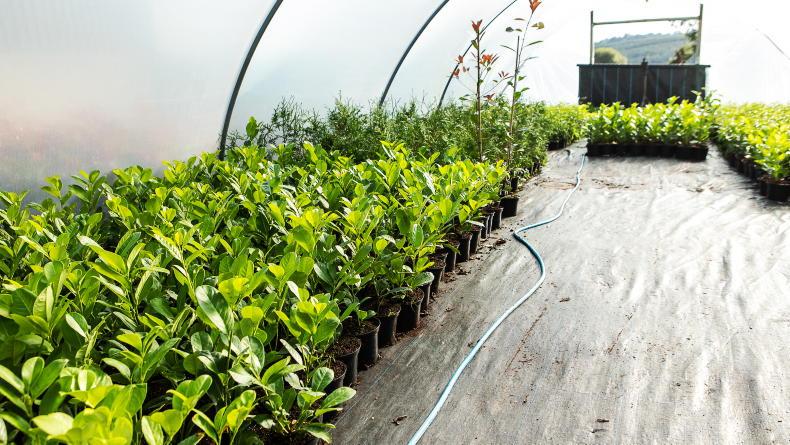
\ Philip Doyle
This is done on-site and has been working well for the last two growing cycles. As we are at the mercy of the weather, the window for lining in trees is usually short enough and focused mainly in the first two weeks of April. The nursery is divided into sections and rows, thus making it easier to manage the soil requirements and land rotation.
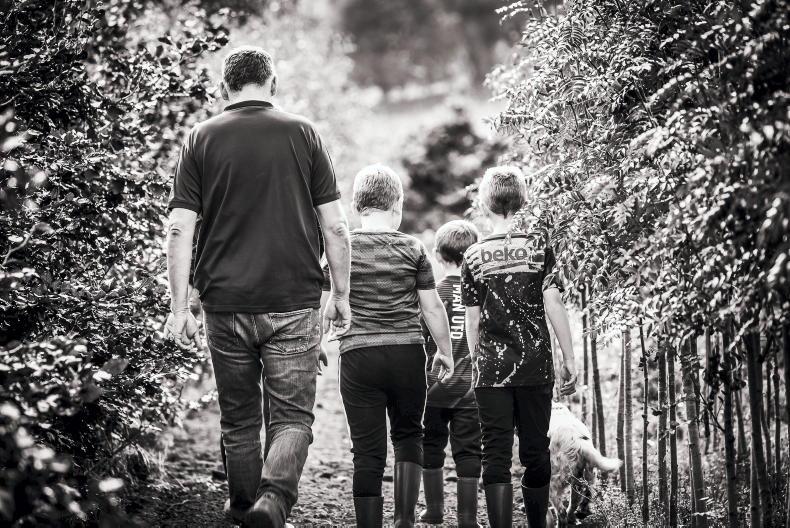
\ Philip Doyle
When a row is cleared during the bare root season, cattle manure is spread on that section and the manure is ploughed into the soil. After two weeks, the section is tilled and rotovated, stone removed and left ready for re-planting. Use of heavy machinery, especially in wetter periods, is kept to a minimum to reduce negative effects on soil structure.
As the years pass, we have found that there were certain areas of the land that needed longer resting periods before replanting. This year, we will plant a cover crop of yellow mustard in resting areas of the nursery.
Research shows that yellow mustard loosens up soil, suppresses weeds and prevents erosion. We intend to plant into the soil in early April and plough it back early next year before another cycle of lining in.
Growing Trees in the Garden
Trees are best planted in the months from November to March, when plants are dormant and there is also sufficient moisture in the soil. With climate change and a shift in the seasons, we are finding October too early to begin lifting or transplanting bare root plants, as most are still in leaf. We don’t lift until there has been a decent frost to knock plants into dormancy.
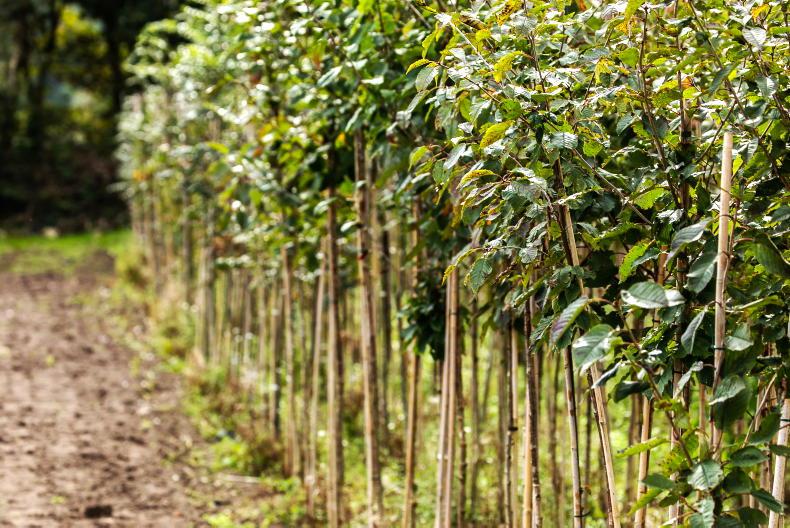
\ Philip Doyle
We encourage Irish gardeners to stick to native trees species that will flourish in our Irish soil. A quick assessment of soil consistency and type when planting trees can save a lot of hardship later on. There are plants to suit most soil types and most trees do thrive in a well-drained and moist soil.
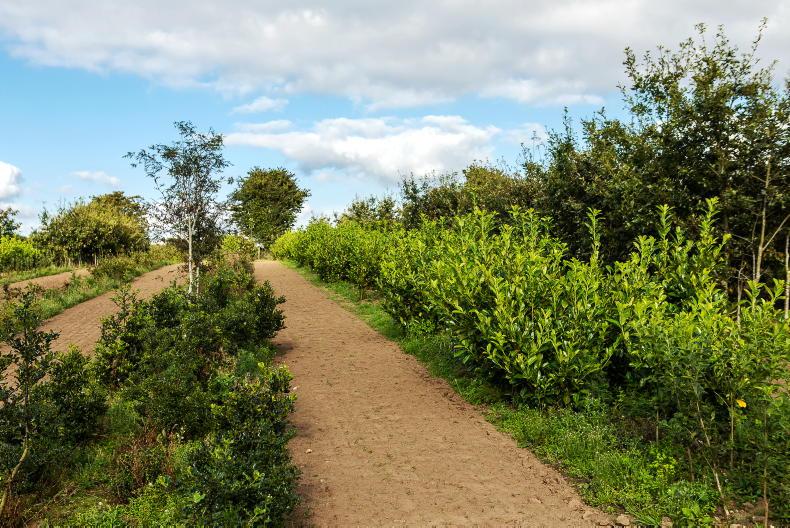
\Philip Doyle
When preparing soil for tree planting, we have found that the addition of organic chicken manure pellets mixed through the soil directly around the base of the trees is a clean and cost effective way to boost the growth of trees in the first two years.
An alternative would be to dig in well composted organic manure into the soil. The manure would need to be well composted down though, as fresher manure could burn the roots of new trees.
The addition of well composted organic matter will also aid in holding moisture in the ground. We also encourage people to lift the sod and turn it over, grass facing down, when firming back in around the base of the tree. This will reduce weeds growing around the base of the tree.
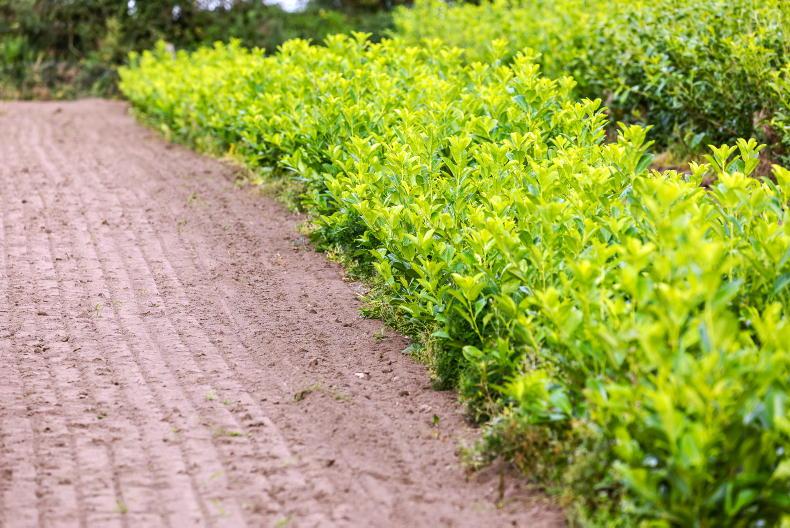
\ Philip Doyle
To finish, a layer of bark mulch around the base of trees is a great way to keep down weeds while keeping moisture in the soil. It also provides a sufficient perimeter around the tree, eliminating the need for power tools or lawnmowers too close to the base of the tree. Damage to the bark from gardening tools can interrupt the growing. To protect trees from animals, tree guards on younger trees will offer protection from rabbits. Deer tend to focus on the buds of trees such as oak etc, so a clear stem above their sightline is recommended.
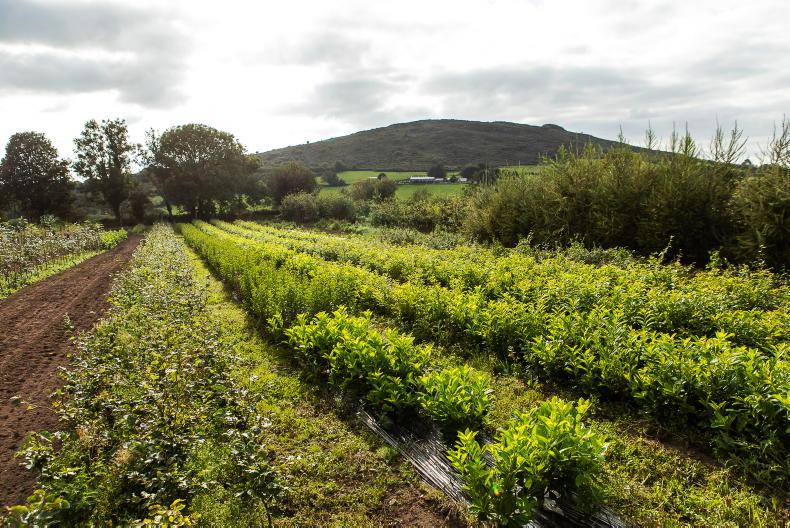
\ Philip Doyle
Like all living things, trees need water, especially in the first few years after planting. Trees planted earlier in the bare root season ( November – January) will have a chance to draw moisture from the ground, but will still need watering over the first summer, if we continue to experience these hotter summers. Trees planted from pots during the summer months will need consistent and regular watering.
Tree saplings are lined out in rows in April and then lifted out of the ground approximately 18-24 months later. We have to work hard to prepare and maintain the soil for this ‘lining in’ process.
Fertilisation
Soil is tested annually and a plan of action is formulated depending on the results of the soil test. In recent years, we have tried to reduce and eliminate chemical fertiliser, mostly due to environmental factors, but also as a direct result of spiralling fertiliser costs.
We are focusing on manure from cattle shed to meet the needs of the land where possible. Combining this with land management, we have been achieving good results. We have reverted to composting down the manure over an 18 month period, turning it periodically to break it down to a finer consistency.

\ Philip Doyle
This is done on-site and has been working well for the last two growing cycles. As we are at the mercy of the weather, the window for lining in trees is usually short enough and focused mainly in the first two weeks of April. The nursery is divided into sections and rows, thus making it easier to manage the soil requirements and land rotation.

\ Philip Doyle
When a row is cleared during the bare root season, cattle manure is spread on that section and the manure is ploughed into the soil. After two weeks, the section is tilled and rotovated, stone removed and left ready for re-planting. Use of heavy machinery, especially in wetter periods, is kept to a minimum to reduce negative effects on soil structure.
As the years pass, we have found that there were certain areas of the land that needed longer resting periods before replanting. This year, we will plant a cover crop of yellow mustard in resting areas of the nursery.
Research shows that yellow mustard loosens up soil, suppresses weeds and prevents erosion. We intend to plant into the soil in early April and plough it back early next year before another cycle of lining in.
Growing Trees in the Garden
Trees are best planted in the months from November to March, when plants are dormant and there is also sufficient moisture in the soil. With climate change and a shift in the seasons, we are finding October too early to begin lifting or transplanting bare root plants, as most are still in leaf. We don’t lift until there has been a decent frost to knock plants into dormancy.

\ Philip Doyle
We encourage Irish gardeners to stick to native trees species that will flourish in our Irish soil. A quick assessment of soil consistency and type when planting trees can save a lot of hardship later on. There are plants to suit most soil types and most trees do thrive in a well-drained and moist soil.

\Philip Doyle
When preparing soil for tree planting, we have found that the addition of organic chicken manure pellets mixed through the soil directly around the base of the trees is a clean and cost effective way to boost the growth of trees in the first two years.
An alternative would be to dig in well composted organic manure into the soil. The manure would need to be well composted down though, as fresher manure could burn the roots of new trees.
The addition of well composted organic matter will also aid in holding moisture in the ground. We also encourage people to lift the sod and turn it over, grass facing down, when firming back in around the base of the tree. This will reduce weeds growing around the base of the tree.

\ Philip Doyle
To finish, a layer of bark mulch around the base of trees is a great way to keep down weeds while keeping moisture in the soil. It also provides a sufficient perimeter around the tree, eliminating the need for power tools or lawnmowers too close to the base of the tree. Damage to the bark from gardening tools can interrupt the growing. To protect trees from animals, tree guards on younger trees will offer protection from rabbits. Deer tend to focus on the buds of trees such as oak etc, so a clear stem above their sightline is recommended.

\ Philip Doyle
Like all living things, trees need water, especially in the first few years after planting. Trees planted earlier in the bare root season ( November – January) will have a chance to draw moisture from the ground, but will still need watering over the first summer, if we continue to experience these hotter summers. Trees planted from pots during the summer months will need consistent and regular watering.













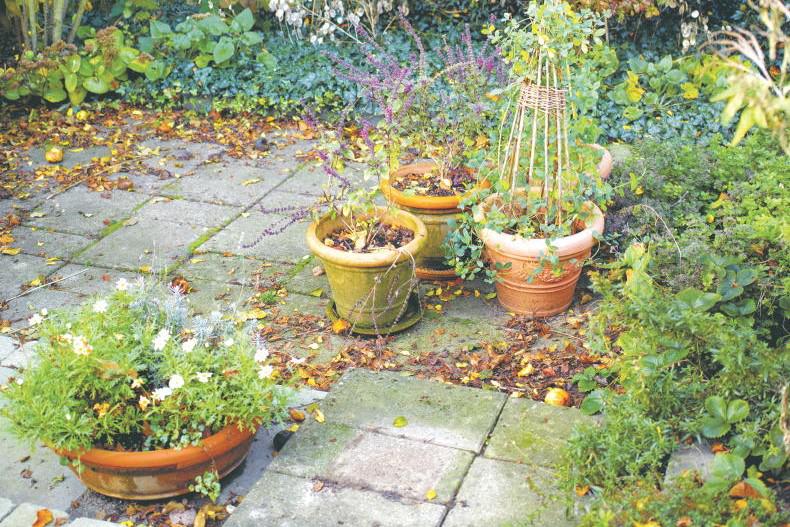
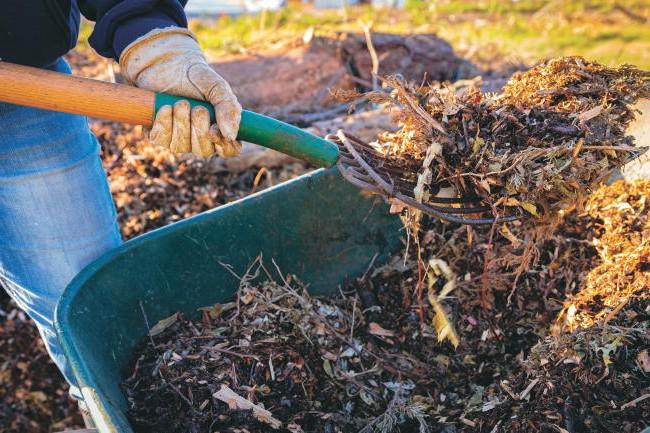


SHARING OPTIONS